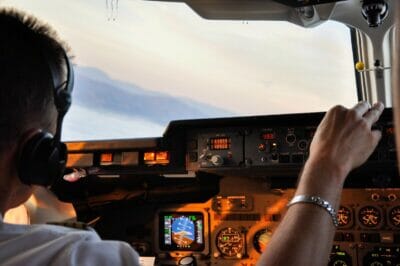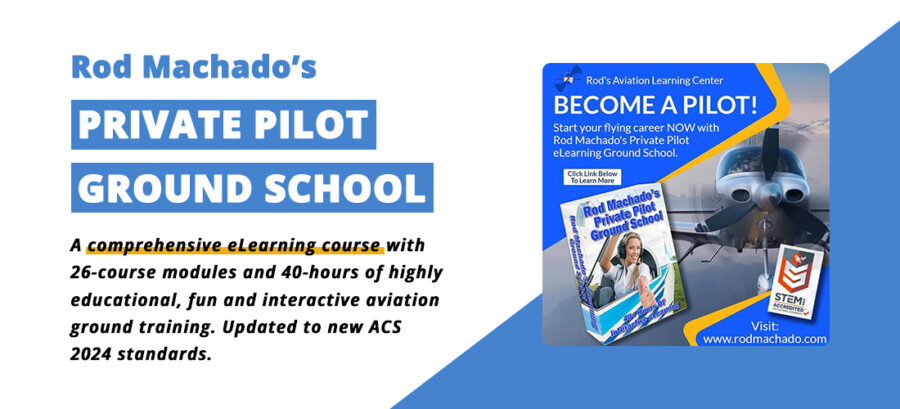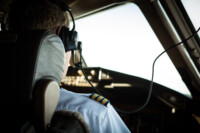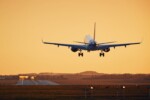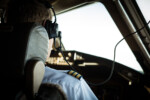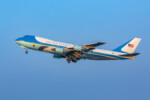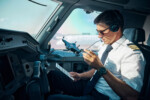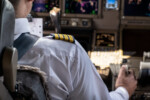A Day in the Life of a Pilot – What is it Like?
22 March 2023 | Updated on February 05, 2024
Ever imagine what it feels like to be a pilot? It is one of the most exciting and rewarding careers in aviation. Each day thousands of pilots in varying roles fly different aircraft types around the globe and get the opportunity to visit new places, meet interesting people, and experience new cultures.
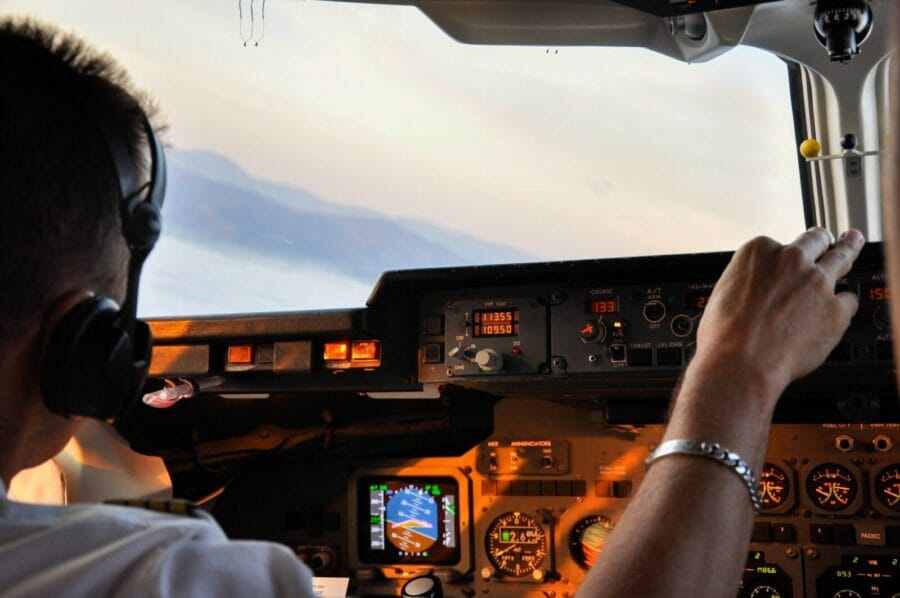
If you think that being a pilot is all about performing repetitive daily tasks and routines. Think again! Apart from typical tasks like pre-flight planning and checks, operating an aircraft, and communicating with air traffic control while monitoring weather conditions. A pilot’s life involves many activities that vary from day to day.
Undoubtedly, being a pilot involves more than just flying airplanes. And depending on the pilot type, each day presents new challenges. While some pilots are responsible for flying passengers and cargo to their destinations, others help farmers grow crops.
In this article, we will look at a day in the life of a pilot and highlight their job roles and work conditions to give you a better insight into the challenges that pilots encounter daily.
A day in the life of an Airline Pilot
An airline pilot is one of the most coveted roles in the aviation industry. They are among the highest-earning professionals in the world, apart from flying state-of-art commercial airliners and passengers to destinations around the globe. Airline pilots also communicate and work with flight and ground crews in different countries.

An airline pilot role requires flexibility, focus, and extensive preparation to deal successfully with daily routines and complex activities that may change quickly with little warning. Several factors can influence an airline pilot’s everyday life, including the type of carrier (budget or flag) they fly, their route, and flight schedule. Nevertheless, here is a summary of what a day in the life of a pilot is like.
- Airline pilots wake up well before dawn to prepare for their first flight. They head to the airport to report at the crew operations center and review the day’s flight plan. After receiving the day’s flight schedules and updates, the pilot calls for weather reports for areas along his route and preps for pre-flight briefings and inspections.
- Airline pilots perform pre-flight inspections at this stage. They head to the tarmac and inspect the aircraft’s mechanical, hydraulic, communication, and electrical systems, searching the landing gear and wings for cracks. After the pre-flight inspection, the pilot heads into the cockpit and reviews a checklist of weather conditions, flight plans, flight altitude, airspeed, and fuel levels with the co-pilot.
- After the passenger boarding process is complete and all final checks are done. The pilot asks air traffic control (ATC) for takeoff clearance. Upon receiving take-off clearance from ATC, the pilot taxied to the runway to take off.
- In-flight operations require less pilot input, allowing airline pilots to monitor the aircraft’s systems and communicate with ATC. Airline pilots also monitor air traffic and weather patterns, make flight plan adjustments when needed, and provide passengers onboard the aircraft with updates.
- Before landing, an airline pilot informs the ATC of the aircraft’s location as it approaches its destination. The pilot initiates the landing procedure and prepares the flight crew and passengers for arrival. After landing, an airline pilot taxis the airplane to an assigned gate and may assist with passenger disembarkation. Airline pilots must perform a post-flight inspection, debrief the crew, and submit flight logs.
Short-haul airline pilots often perform multiple daily flights and need more turnaround time to refuel and perform post-inspections between flights. Several short-haul flights involve brief stops between cities, with the final flight eventually ending at the pilot’s home base, often late at night.
Long-haul airline pilots endure over six-hour flights, often across different time zones. Their daily lives consist of hours sitting in an airplane cockpit, then hours of sleep in a hotel room, then back to the airport and into another cockpit. The routine can last several days and is exacerbated by jet lag and living in different time zones. Long-haul pilots earn higher pay and receive more days off than short-haul airline pilots, who get to spend each night with their families.
A day in the life of a Charter/Corporate jet Pilot
How does it feel to be part of the luxury jet-setting lifestyle? Ever wondered how wealthy and famous people travel to exclusive destinations and exotic holiday resorts? Charter/corporate jet pilots have the answers because their job involves flying movie stars, entertainers, famous athletes, and wealthy entrepreneurs around the globe on luxury jets.
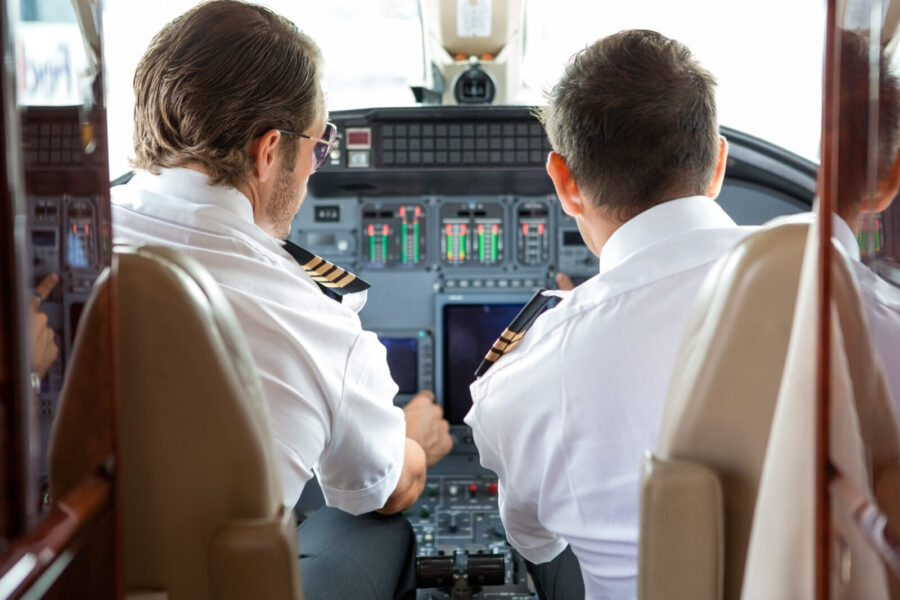

The life of a charter/corporate pilot can be hectic because you must be available to fly at a moment’s notice, and you often spend the trip flying on the whim of your passengers. As a charter/corporate pilot, you often juggle several activities simultaneously, some of which have little to do with flying an airplane. Your job is to ensure passengers’ comfort and safety and ensure the flight crew satisfies their demands.
However, being a charter/corporate job is rewarding because you meet famous and interesting people and visit some of the most exclusive locations. What does a day in a charter/corporate pilot’s life look like? Here is a summary.
- A charter/corporate jet pilots’ day starts early, around 5.30 AM. He checks the day’s weather forecast and opens his email to review the day’s flight plans and find out if there are updates or special instructions for the flight.
- He/she heads to the airport and reviews pre-flight instructions inspects the aircraft, checks fuel levels, and goes through safety procedures.
- After, the pilot waits in the lounge to meet passengers as they arrive and reviews the flight plan and safety instructions with them. Afterward, the charter/corporate pilot ensures the ground crew loads the passengers’ luggage correctly onto the aircraft and checks if the passengers are comfortably seated in the cabin.
- The charter/corporate pilot takes off after receiving clearance from ATC. During the flight, the pilot monitors the aircraft systems, communicates with ATC, and checks in on the passengers to ensure a smooth flight.
- After landing, they assist passengers with disembarking at the destination airport. The pilot may refuel the aircraft while waiting for the passengers to return or take off to pick up the following passengers.
Charter/corporate pilots often perform multiple daily flights between large and small cities, eventually returning to base to file flight reports with the charter company before heading home. Pilots flying larger business jets often fly their passengers to international destinations. Their trip usually lasts several days, and their career lifestyle resembles those of long-haul airline pilots.
A day in the life of a Military Pilot
Military pilots live highly regimented lifestyles, and their daily life is a mix of physical activity followed by intensive training, mission preparation, and precise execution. A day in the life of a military pilot depends on their mission and aircraft type. Military pilots across the four service departments include fighter pilots, transport pilots, bomber pilots, reconnaissance and observation pilots, search and rescue pilots, etc.
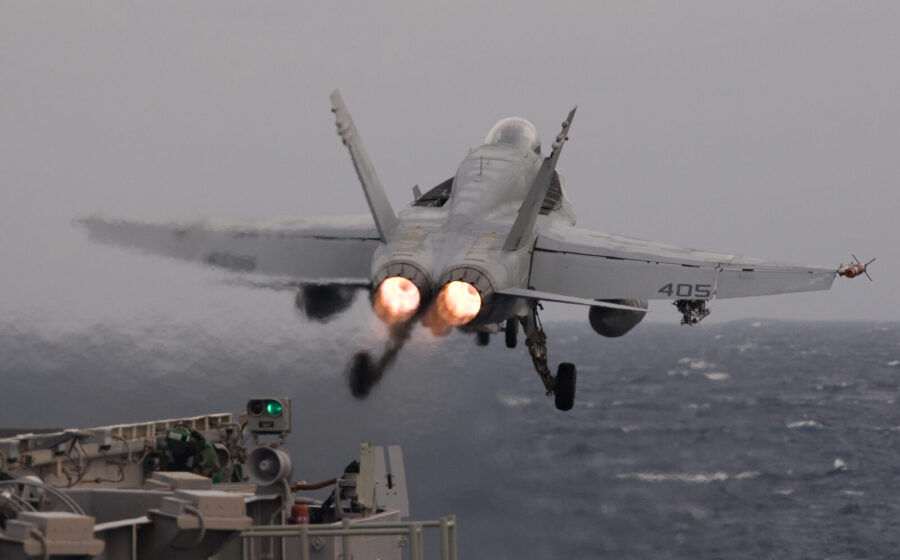

What does a day in the life of a military pilot look like? Let us find out.
- Military pilots start their day at a pre-appointed time, often before sunrise, to prepare for the day’s activities.
- Early morning activities start with a physical exercise consisting of strength and cardiovascular training needed to withstand the stress of high-altitude flight operations.
- After a shower and breakfast, military pilots head to the operations room for meetings and briefings on the daily mission. They receive mission orders and objectives from their commanding officers and get updates on mission-related information like weather conditions, hostile locations, and restricted airspace areas.
- Military pilots then head out of their aircraft and go through a pre-flight checklist, perform pre-flight inspections, and ensure that all aircraft systems function correctly.
- Once the aircraft is in the air, military pilots focus on achieving their mission objectives. These may include cargo or personnel transport, troop evacuation, search and rescue, reconnaissance, aerial refueling, electronic signals jamming or interception, and combat operations. During their mission, they monitor flight, navigation, and weapons systems while maintaining communication with ground control when necessary.
- Military pilots return to base after completing their missions. They attend debriefing with their team and commanding officers and evaluate the mission performance.
- The pilots may take a break for lunch and rest, but the rest of the day may be filled with administrative tasks related to their previous mission. They are also expected to participate in training and development, including classroom classes and flight exercises.
A day in the life of a Bush Pilot
As you have guessed, a bush pilot flies people and cargo into remote locations worldwide. It is not a job for the faint-hearted, though, because a bush pilot’s responsibility is flying into uncharted territory, and expertise at executing death-defying airplane maneuvers is a required flying skill.
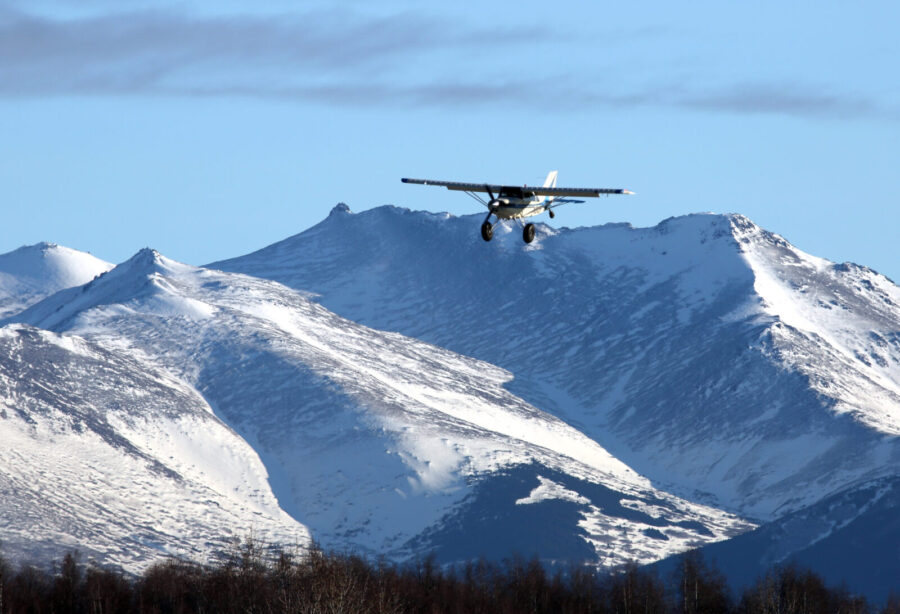

Don’t get me wrong, being a bush pilot isn’t all about gung-ho flying. They provide essential services to the remote jungle, coastal, and Arctic communities by transporting supplies and skilled personnel to those areas. However, the role of a bush pilot is challenging, and having quick thinking abilities during tough situations can save your life more than once.
If you love routine and comfort, you should stick with being an airline or a charter pilot. But if flying in extreme conditions, navigating through mountainous terrain, landing on icy or unpaved runways, and throwing supplies from a fast-moving airplane to people on the ground is your idea of a fun day at the office. Being a bush pilot may be your ideal calling.
Each day brings unique challenges for a bush pilot. And each flight is different from the previous one. Let us look at a day in the life of a bush pilot.
- A bush pilots’ day starts at the base airport, where preparations for the day’s flight begin. The pilot reviews the flight schedule, checks the weather report for the route, and plots the aircraft’s navigation path to determine the most efficient and safest route to the destination.
- Afterward, the bush pilot performs a pre-flight inspection of the aircraft. The pilot begins by checking all external equipment for leaks and cracks before checking all the critical systems in the cockpit.
- The pilot may supervise loading the aircraft. The pilot must ensure the airplane’s cargo weight and balance are within the aircraft’s recommended limits.
- The pilot may be responsible for transporting passengers alongside the cargo. Before taking off, the passengers may board the aircraft.
- The flights start once the pilot receives clearance for take off. Bush pilots fly with a high awareness of the situation around them, and they often watch for obstacles when flying over uneven terrain and maintain frequent contact with ATC.
- The pilot may perform a flyby before landing, allowing the pilot to survey the landing spot to identify potential hazards before making a final approach. The destination could be a remote community, a mining camp, a hunting camp, or a fishing lodge.
- After landing, the pilot helps to unload the airplane, refuel the aircraft if needed, and return to the base airport. The pilot may also carry cargo or passengers on the return trip.
- At the base airport, the pilot may help to unload the plane and refuel the aircraft. Typically, a lunch break occurs around this period before the pilot returns to duty. A bush pilot may perform multiple daily flights to remote destinations while carrying fuel drums, hospital supplies, food, and mining equipment. The bush pilot may airdrop some cargo over their destination due to a lack of an accessible landing strip.
- After the day’s final flight, the bush pilot will perform any necessary maintenance, clean the aircraft and refuel in preparation for the next day’s flight operations.
A day in the life of a Cargo Pilot
A cargo transport pilot may not be as celebrated as an airline pilot, but they occupy a vital position in today’s fast-paced e-commerce world and instant delivery. Cargo pilots make overnight delivery of that $300 sneaker you ordered on ebay possible. A day in the life of a cargo pilot depends on the airline you work for, the type of aircraft you fly, and your routes.


If you like the thrill of meeting schedules, working in a fast-paced aviation environment, and not dealing with passengers, then a cargo pilot job might suit you. So, what does a day in a cargo pilot’s life look like?
- Like other commercial pilots, a cargo pilot’s day starts before dawn. The pilot heads to the airport’s operation center hours before the flight departure to review weather reports, read the flight plan, and check for any updates on the day’s flight operations. The pilot also revisits a copy of the cargo manifest, ensuring no hazardous materials are onboard the aircraft.
- Performing pre-flight inspection comes next. The pilot thoroughly examines the exterior parts of the aircraft for leaks and cracks, then checks the cockpit’s navigation systems, fuel levels, electrical systems, and other critical systems.
- The pilot may oversee the cargo loading process by confirming all the cargo is properly secured in the cargo bay.
- Once the cargo is onboard and safely secured, it is time to take off. The pilot starts the aircraft engines and receives clearance from flight control. The aircraft taxied to the runway and took off after receiving authorization from ATC.
- Cargo pilots often fly for several hours, with the pilot taking breaks to relax and stretch. During the flight, pilots monitor flight control systems, check weather patterns, and adjust the flight path to ensure the aircraft stays on course.
- The pilot informs ATC of the aircraft’s position as it approaches its destination and lands after receiving clearance.
- Ground crews unload the aircraft at the cargo area while the pilot oversees the process. The pilot is also responsible for removing all cargo from the plane.
- The pilot performs a post-flight inspection of the aircraft if there are no scheduled flights for the day. A layover is arranged before the pilot returns to the airport for the return trip.
- If other flights are scheduled, the pilot performs another round of pre-flight inspection, files a flight plan, refuels the aircraft, and supervises another round of cargo loading before take off.
- The pilot repeats the process at the next destination. Cargo pilots fly several daily flights before returning to their home base, where they shut the aircraft down, perform a post-inspection, submit their flight logs, and head home to repeat the process the next day.
A day in the life of an Agricultural Pilot
You’d never think a pilot could be involved in growing the food you eat. But it is what agricultural pilots do for a living, and modern intensive farming won’t be possible without them.
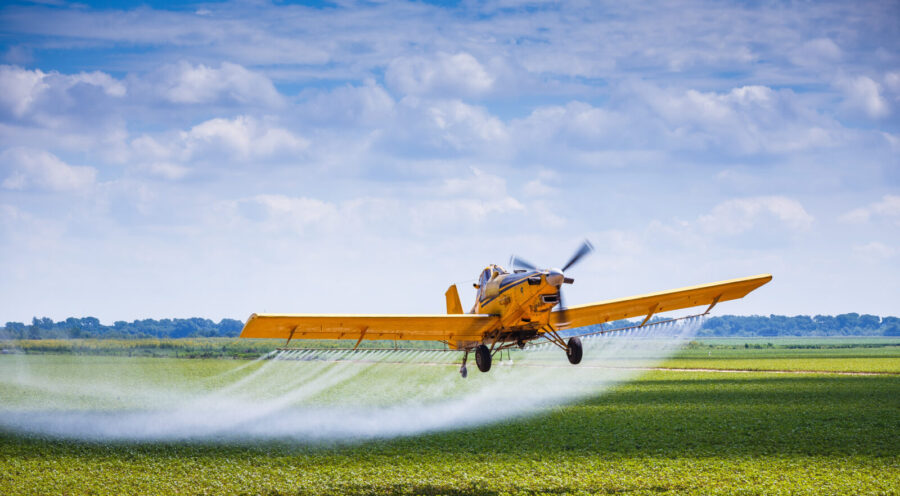

Agricultural pilots are responsible for flying crop dusting airplanes that spray pesticides and other chemicals protecting crops from diseases. A day in the life of a farming pilot is different from other commercial pilots because, unlike an airline or transport pilot, they take off and land at the exact location after each flight.
Let us have a closer look at a day in the life of an agricultural pilot.
- An agricultural pilot’s day starts after arriving at the airfield to prepare the aircraft for the day’s flight operations. The pilot inspects the airplane systems, including the spraying mechanism. Any issues are quickly fixed, and adjustments are made to ensure the airplane is in good condition and safe to fly.
- Next, the pilot reviews the day’s flight activities, including the fields that need chemical dusting, those that require pesticides, etc. Planning an efficient route between the fields is vital while accounting for weather conditions, wind direction, and terrain features like power lines and wind farms.
- Throughout daylight hours (and sometimes before dawn), the pilot sprays multiple fields, ensuring the correct chemical is sprayed on each field. The pilot maneuvers the aircraft at low altitudes to ensure the chemicals have full coverage.
- The pilot may take a break in the afternoon for lunch and rest. During this period, the aircraft refuels, and a quick plane inspection is done before another round of crop dusting commences.
- Crop dusting is dangerous work involving low-altitude flight operations in challenging conditions. Pilots suffer from heat strokes and dehydration and may have to fly the aircraft during heavy winds. The pilot may take multiple daily breaks to conserve physical strength and maintain mental alertness.
- After the day’s work, the pilot returns to the base airfield and shuts down the aircraft engines. The pilot cleans out the aircraft, empties the remaining chemicals from the spray tanks, and performs any necessary maintenance on the plane.
Conclusion
Although a day in the life of a pilot may include some Interesting events, mostly, it is typically filled with routine activities and tasks. But do not think a pilot’s lifestyle is boring because it offers several opportunities for travel and adventure. A day in the life of a pilot requires lots of focus and dedication to ensure the safety of passengers, flight crew, and cargo. However, the thrill of flying makes it a unique and satisfying career choice.





















